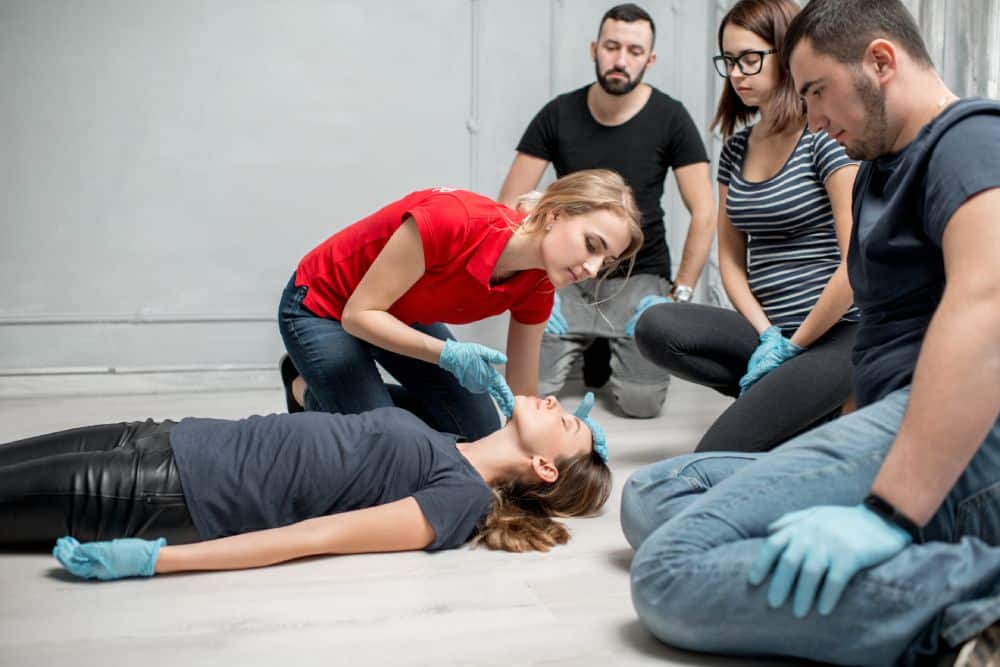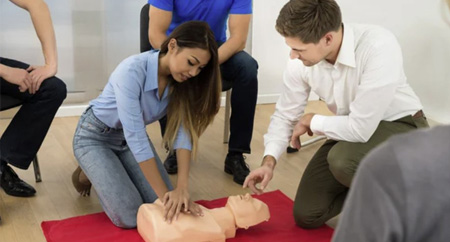Introduction
In our fast-paced world, emergency situations can strike at any moment, whether in your home, work, or in public rooms. Being prepared to respond properly can make the difference between life and death. This is where first aid enters into play. While many view a first aid course as merely a requirement for sure professions or an addition to their return to, it prolongs far past that. It incorporates abilities that encourage people to act with confidence during emergencies.

First help knowledge not just conserves lives but likewise boosts area safety and security and develops strength among individuals of every ages. In this article, we will explore the diverse role of first aid in day-to-day life-- dissecting its importance, the training included, and just how it gears up individuals with essential abilities that resonate via different aspects of life. So, distort up as we dig much deeper into The Role of Emergency treatment in Everyday Life: More Than Just a Certificate
The Function of First Aid in Everyday Life: Greater Than Simply a Certificate
Understanding Very first Aid
First help refers to the prompt treatment offered to a person who has suffered an injury or disease before professional clinical help gets here. The objective is simple: stabilize the client's problem and prevent more injury. This might involve fundamental techniques like using plasters, performing mouth-to-mouth resuscitation (Cardiopulmonary Resuscitation), or utilizing an Automated External Defibrillator (AED).
It's crucial to acknowledge that emergency treatment isn't practically physical injuries; it includes mental health emergencies too. As an example, giving support during a panic attack or acknowledging signs of shock can also become part of efficient first aid.
The Relevance of First Aid Training
Why needs to everyone think about signing up in a first aid course? The solution depends on readiness. Emergency situations are unpredictable; however, being educated means you can respond promptly and efficiently when they occur.
Confidence Structure: Recognizing just how to handle emergency situations infuses confidence not just in yourself however also guarantees those around you. Community Security: Trained people contribute dramatically to overall area security by supplying aid during crises. Legal Defense: Numerous areas have Good Samaritan regulations that safeguard those who supply assistance in emergencies from lawful repercussions.The Structure of a First Aid Course
A common first aid course often covers:
- Basic CPR techniques Use of AEDs Bandaging injuries Responding to choking occurrences Treating burns and fractures Managing shock and seizures Mental health and wellness first aid
Courses might vary from basic training sessions lasting a few hours to comprehensive multi-day workshops where participants earn a first help certificate upon completion.
Why Pick CPR Courses?
CPR training courses particularly focus on mentor lifesaving strategies that can be employed when a person stops breathing or their heart quits beating.
Key Components:
- Adult, child, and baby mouth-to-mouth resuscitation techniques Rescue breaths vs. breast compressions Recovery positions
According to various studies, prompt CPR can double or perhaps three-way the possibilities of survival for heart attack sufferers. Consequently, investing your time right into a CPR course is most certainly worthwhile.
How to Select the Right Course
With countless companies offering training worldwide, choosing the appropriate course may seem complicated. Here are some pointers:
Accreditation: Ensure the institution is recognized and accredited. Course Material: Evaluation what specific abilities are taught. Teaching Design: Some individuals find out far better through hands-on technique; check if functional demos are included. Location & Timing: Opt for classes that fit your routine without added stress.First Aid Abilities Everybody Must Master
1. Choking Management
Choking is just one of the most usual emergency situations came across daily; thus knowing how to execute stomach drives (the Heimlich maneuver) can be lifesaving.
Steps:
Assess the situation-- ask if they're choking. Stand behind them, put your arms around their waist. Make a hand with one hand and area it above their navel. Grasp the fist with your various other hand and drive inward and higher up until they cough or breathe again.2. Doing CPR
As outlined earlier, mouth-to-mouth resuscitation is important for anybody experiencing heart attack:
Steps:
Call emergency solutions immediately. Begin upper body compressions at a rate of 100-120 compressions per minute. If educated, provide rescue breaths after every 30 compressions (30:2 proportion).3. Treating Wounds
Wound care might appear trivial but knowing just how to cleanse and clothe injuries correctly can stop infections:
Steps:
Wash hands thoroughly. Apply mild pressure with sterilized gauze until bleeding stops. Clean around the injury with soap and water before using an antibiotic lotion and dressing.Mental Wellness First Aid
Emergencies aren't exclusively about physical injuries; psychological health and wellness dilemmas need immediate interest too!
Recognizing Signs of Distress
Understanding indicators such as extreme anxiety or visible distress helps you step in appropriately:

Providing Support During Crises
Be tranquility yet assertive; guiding a person through anxiety attack utilizing grounding methods can ease their symptoms significantly.
The Influence on Families
First help understanding plays a very useful role within families-- producing peace of mind pertaining to safety and security while supporting obligation among youngsters as well.
Teaching Children About First Aid
Instilling these abilities beforehand makes certain kids grow up understanding exactly how crucial it is to care for themselves and others:
Use age-appropriate language. Engage them via fun activities like role-playing circumstances where they use fundamental techniques!Workplace Safety Culture
Employers must focus on first-aid training within their workplace atmospheres for Hobart CPR course availability different factors:
1) Compliance with Occupational Safety And Security Rules: Several offices have to adhere strictly to safety criteria calling for experienced personnel ready during emergency situations-- reducing obligation dangers overall!
2) Improved Staff Member Morale: Employees feel valued when business purchase their health-- developing strong group dynamics where participants watch out for every various other's welfare promotes trust!
Conclusion
In final thought, embracing first aid expertise transcends merely getting certification-- it personifies preparedness towards life's changability whilst nurturing individual development along the road!
Investing time right into discovering abilities such as CPR not just enhances specific capabilities yet strengthens neighborhoods against possible situations lurking around every corner! Inevitably becoming equipped saves lives while promoting much healthier cultures-- making it vital that everyone takes into consideration registering in detailed programs focused on both general 'first-aid' & & specialized 'CPR courses'.
Frequently Asked Questions
What is included in a basic emergency treatment course?
A requirement emergency treatment course normally consists of instruction on fundamental injury treatment, CPR strategies for adults/children/infants, choking administration procedures along with managing shock/seizures properly including sensible drills!
How long does it take to complete a CPR qualification class?
Most CPR certification classes vary from 4-- 8 hours depending upon whether they cover adult/child/infant specifics! Inspect neighborhood offerings for specific timing information customized specifically in the direction of your needs/preferences!
Is my first-aid certificate valid indefinitely?
No! Many qualifications have expiration dates (typically 2 years); regular revival guarantees upgraded knowledge based on existing guidelines/best practices!
Can I teach others once I complete my training?
While you gain valuable understandings throughout these programs; formal teaching needs extra qualifications/certification from identified companies governing instructor-led programs!
Are online courses reliable compared with conventional classes?
While online finding out gives flexibility & & ease; hands-on technique stays critical particularly regarding skill-development necessary along with theoretical understanding-- hybrid strategies usually generate ideal results!
By incorporating these crucial methods right into our day-to-days live we can cultivate much safer settings anywhere! So why wait? Subscribe today for any available 'First-Aid' & & 'CPR' training courses-- you'll thank on your own later!
